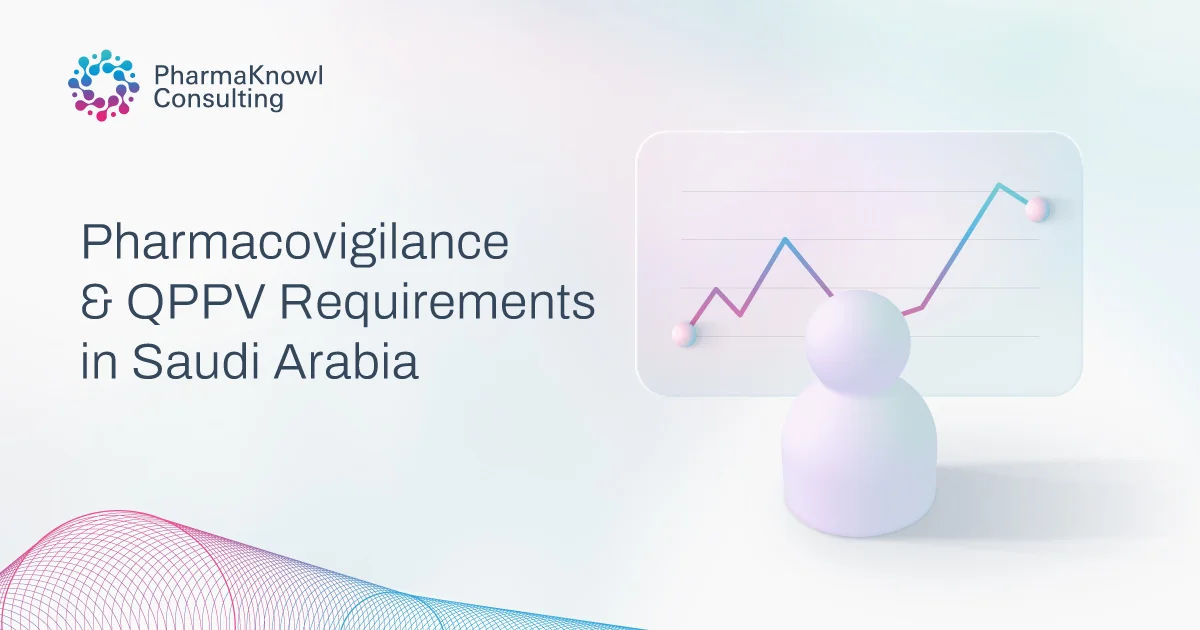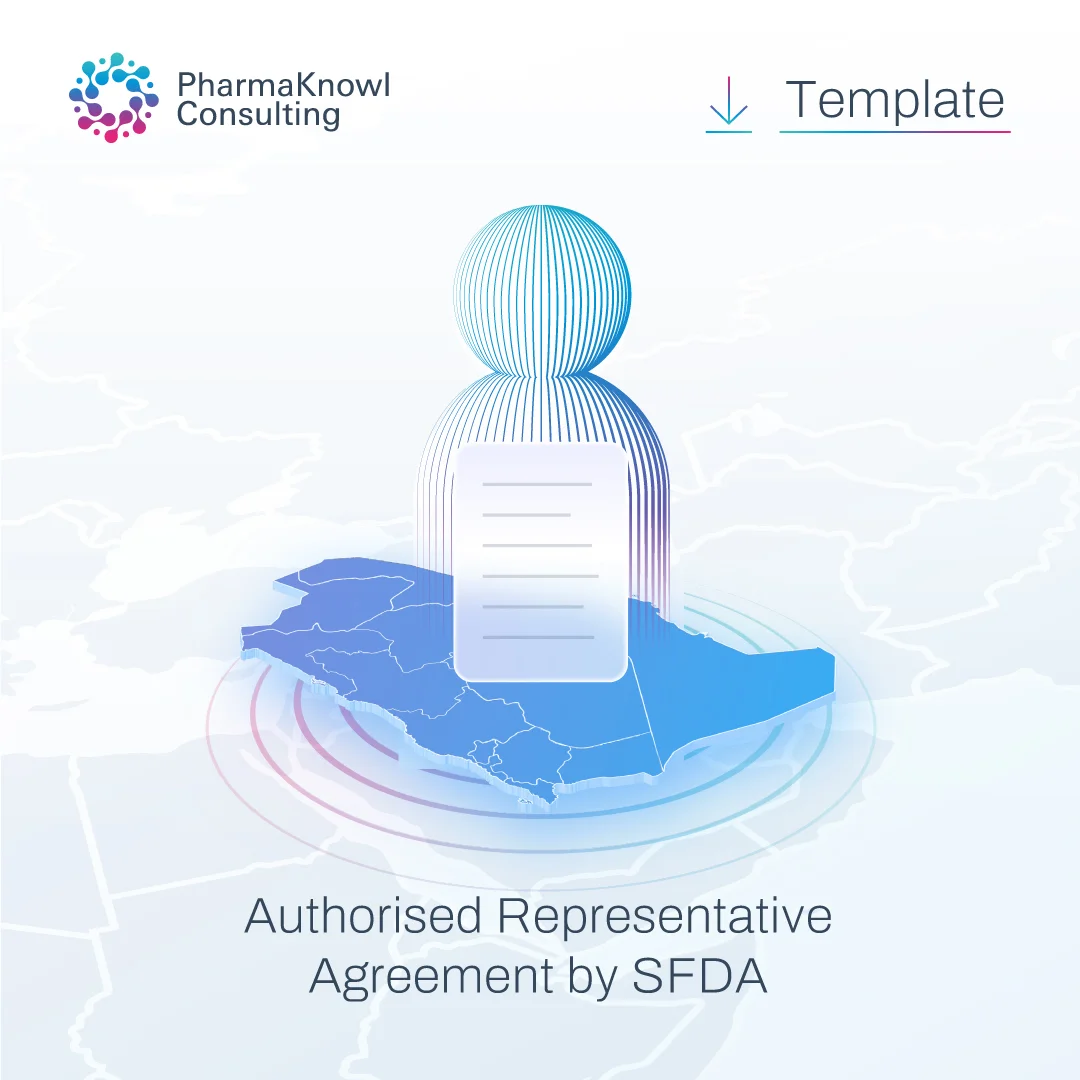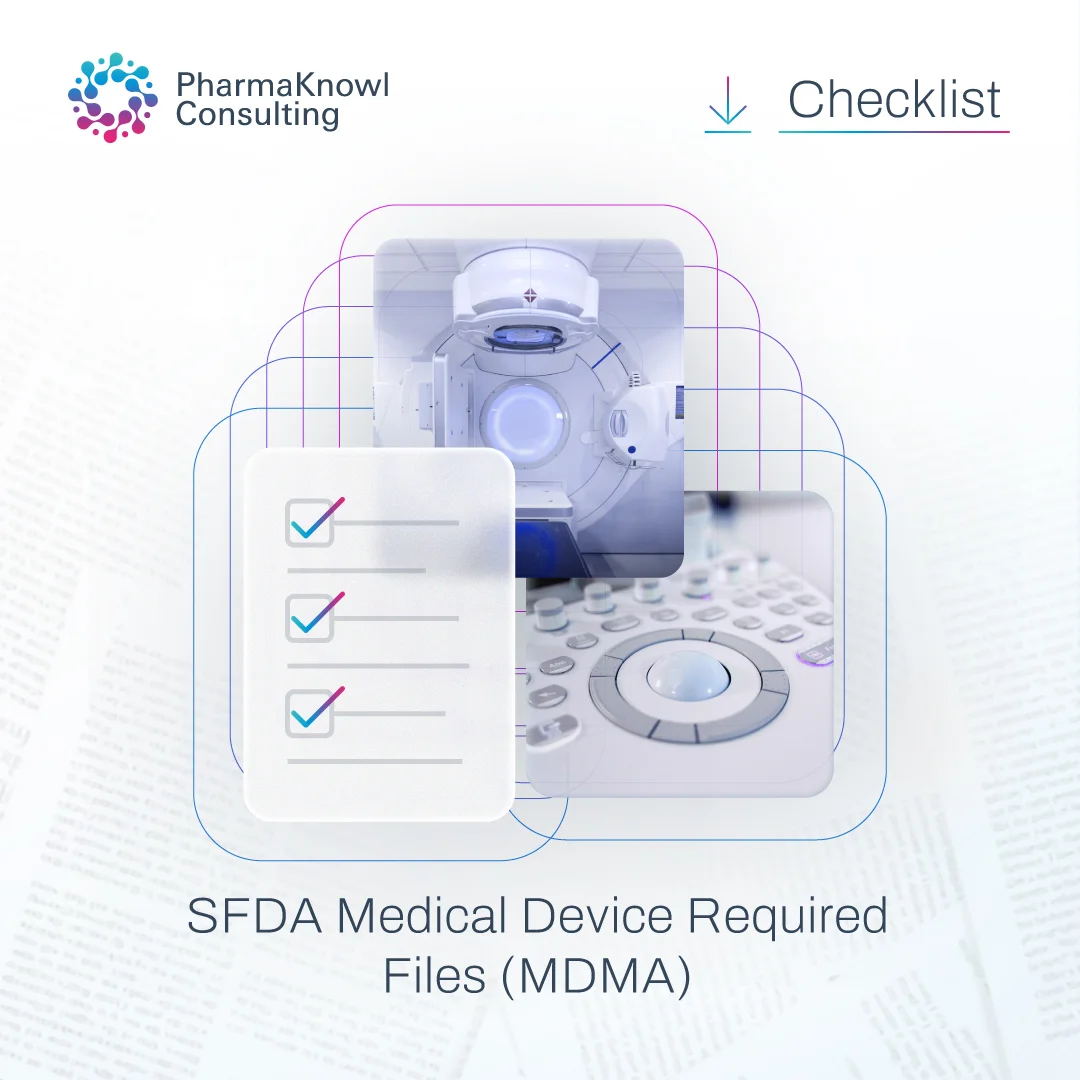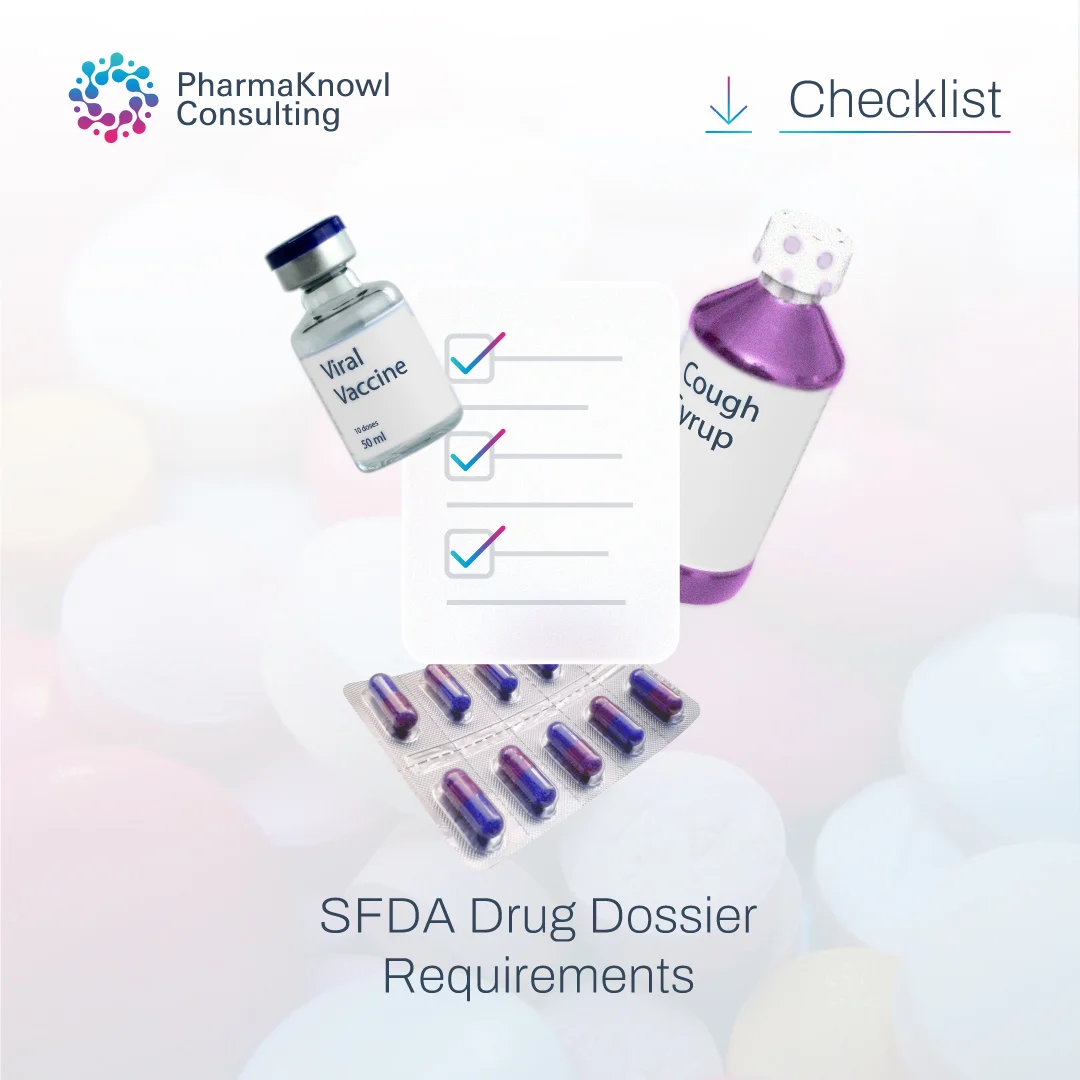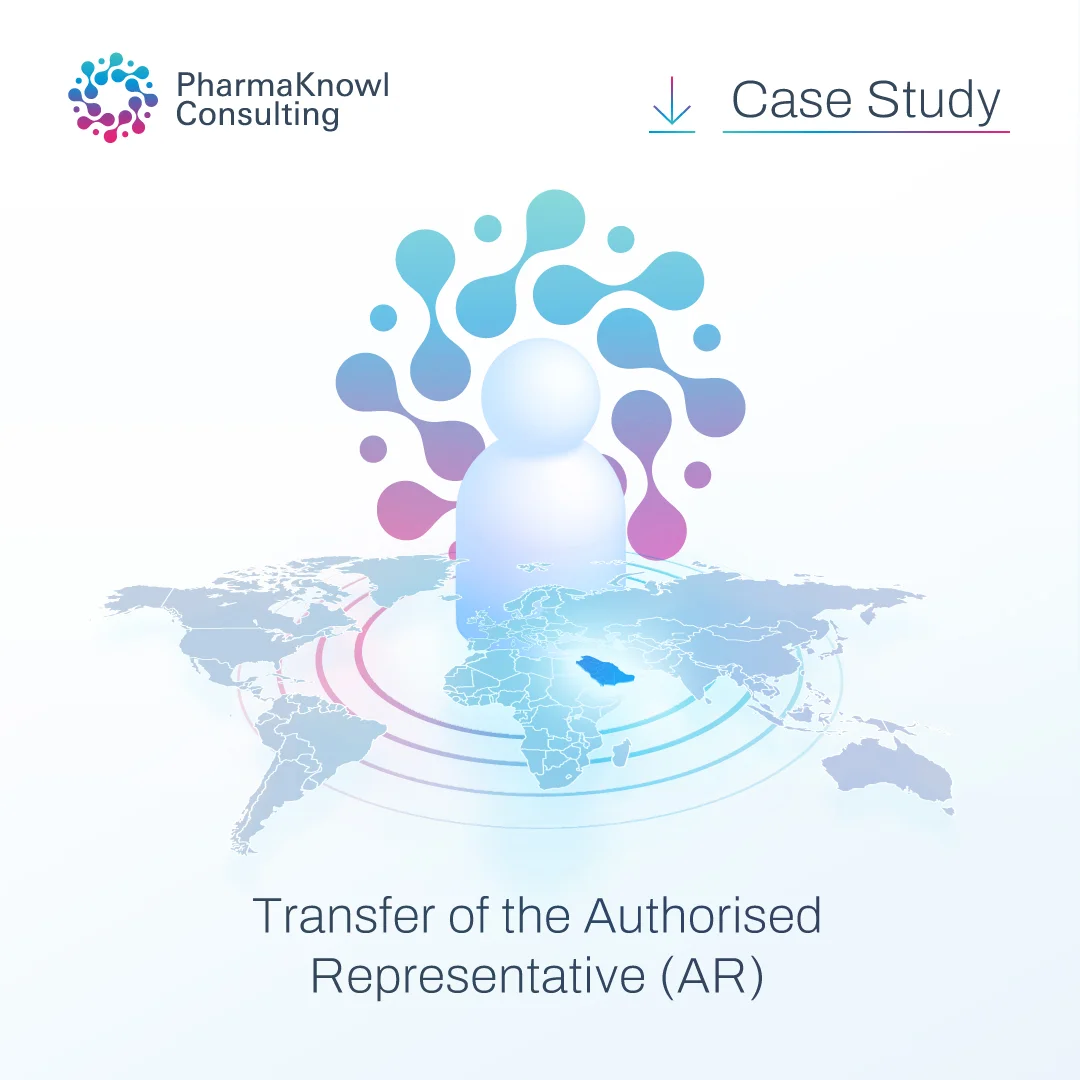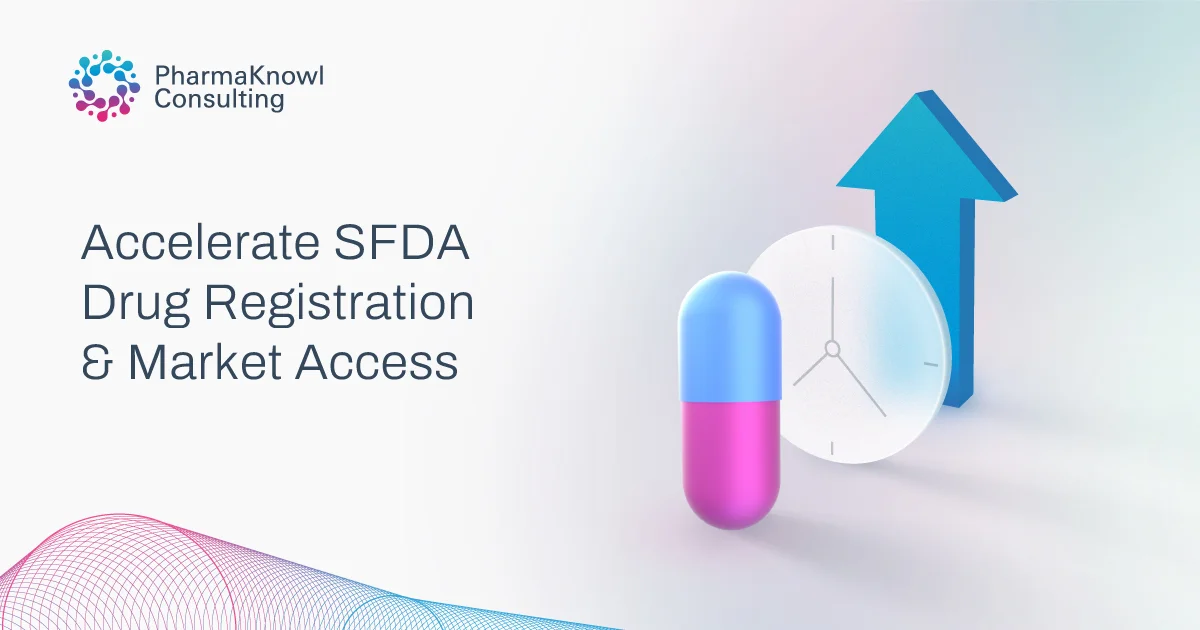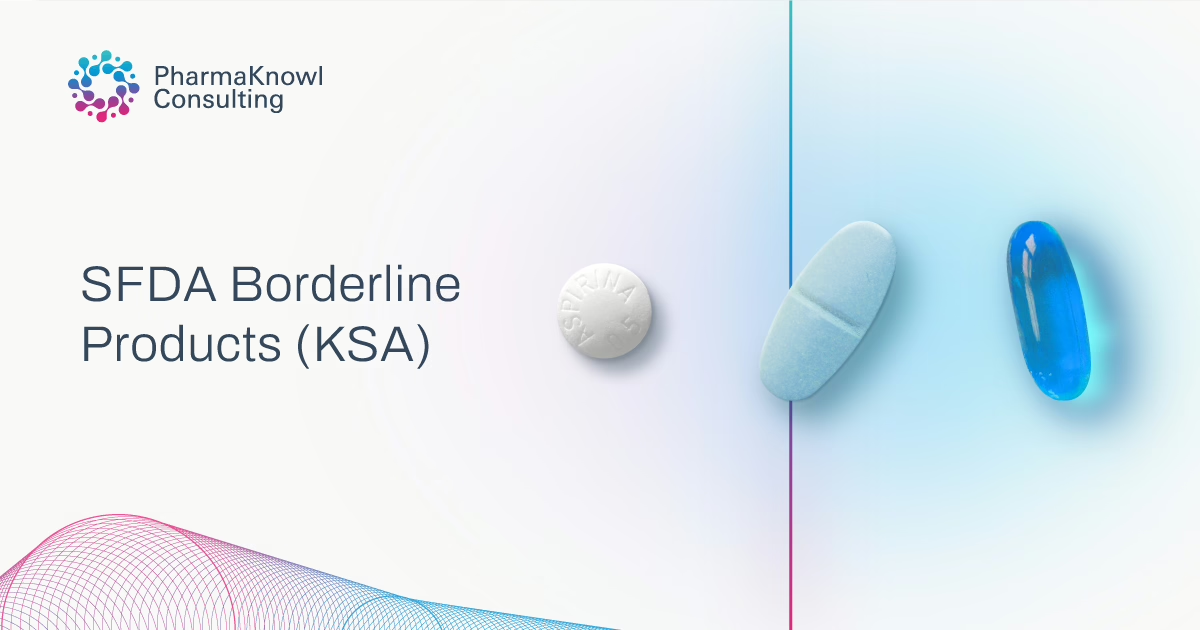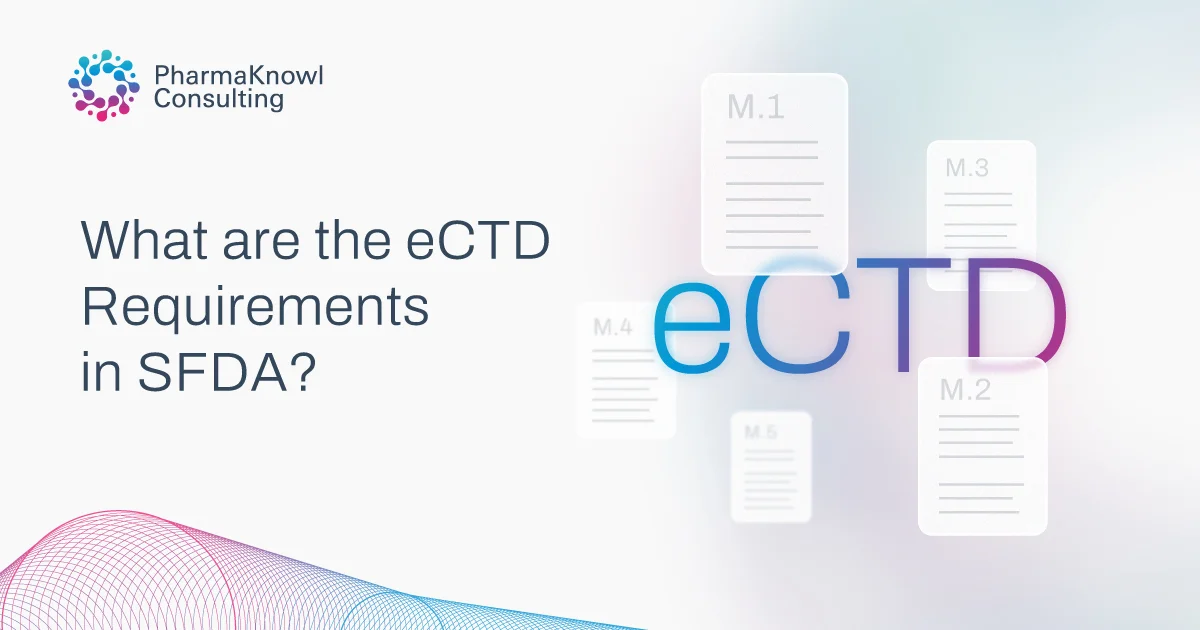This post summarizes the pharmacovigilance (PV) regulations in Saudi Arabia, based on the Good Pharmacovigilance Practices (GVP) guidelines published by the Saudi Food and Drug Authority (SFDA). We will clarify the process and requirements for appointing a local Qualified Person for Pharmacovigilance (QPPV or LQPPV), as well as other related pharmacovigilance requirements necessary for drug registration.
We will include a breakdown of PV responsibilities among different acting entities, such as distributors, scientific offices, local MAHs, and global MAHs. In addition, we will highlight the option to outsource the LQPPV to a third-party Pharmacovigilance Provider (Consultancy) to act on behalf of the MAH in the Saudi market.
Table of contents
Background
- 2005
The SFDA released the first draft of the pharmacovigilance guidelines. - 2009
An SFDA circular was issued requesting the industry to submit the aggregate adverse reaction (ADR) reports to the National Pharmacovigilance and Drug Safety Center, currently named (Saudi Vigilance). This SFDA circular was the first direct enforcement of PV in Saudi Arabia. - 2010
SFDA issued a circular marking the first enforcement of the need to appoint a QPPV/LQPPV. - 2011
The first official SFDA PV Guideline was issued in June 2011 under the name (Saudi Pharmacovigilance Guideline of Registered Medicines). - 2014
SFDA issued a circular mandating the Saudization of the QPPV role (for Saudi nationals only). The circular specified the end of 2016 as the enforcement deadline. - 2015
SFDA issued the PV guidelines under the new title, “Guideline on Good Pharmacovigilance Practices (GVP).” This version was the first comprehensive PV reference, spanning 499 pages. However, the SFDA wisely adopted a gradual enforcement approach to allow sufficient time for the local industry to implement these stringent requirements and plan for the related costs. The GVP guideline outlines the requirements for each significant PV process across eleven PV modules. They are generally adopted from the EU guidelines, but with Saudi-specific requirements. For example, the SFDA requests all international marketing authorization holders (MAHs) to develop and maintain a local PV system in Saudi Arabia. It must be documented in a file called “Pharmacovigilance Sub-System File (PSSF),” which is required in addition to the company’s global PV system, “Pharmacovigilance System Master File (PSMF).” - 2023
The SFDA reached an advanced level in implementing the PV guidelines. Enforcement became more stringent with regular inspections of pharmaceutical companies. SFDA firmly checks the integrity of the submitted PSMF, PSSF, Risk Management Plan (RMP), and QPPV appointment within the drug registration application. Additionally, the SFDA is leading a nationwide initiative to encourage healthcare practitioners and patients to report adverse drug reactions (ADRs). - 2024
Submission of Risk Minimization Measures (RMMs) and proof of their efficacy in distribution is increasingly requested by the SFDA.
Pharmacovigilance Activities
What is meant by pharmacovigilance activities is the process of collection and assessment of safety data, mostly adverse drug events, originating from solicited or spontaneous sources. The whole activity is designed to achieve one objection: to increase the benefit-risk profile of a drug product.

Pharmacovigilance Requirements
According to the SFDA GVP guidelines, the marketing authorization holder (MAH) is responsible for implementing a compliant PV system. It shall be operated by a local QPPV within a quality system and documented in a local PSMF called PSSF.
We will summarize here the requirements according to the company type:
Local Distributor
Since the MA holder is ultimately responsible for PV, local Saudi distributors are not obliged to hire a QPPV or implement a PV system. Distributors must only be trained by the MAH to handle safety information, report ADRs, and fulfill other PV obligations under a Safety Data Exchange Agreement (SDEA).
However, if the Distributor agrees to cover the PV responsibility on behalf of the MAH, they shall hire an LQPPV and implement a complete PV system. They can also outsource it to a PV service provider.
Saudi Pharmaceutical Manufacturer
When the Saudi manufacturer is also the MAH for a product, they must implement, operate, or outsource a PV system. The PV system represented in the PSMF is sufficient for local Pharmaceutical manufacturers.
International Pharmaceutical Company
With a Scientific Office
Foreign pharmaceutical companies with registered scientific offices must implement a local PV system in Saudi Arabia (PSSF) in addition to the one implemented in their global offices, PSMF. The local PV system shall cover all PV tasks and responsibilities inside the Saudi market to ensure their liability for the safety of their registered drugs.
In addition, the MAH must establish an adequate quality management system (QMS) for performing PV activities. The scientific office can also outsource PV activities to a consultancy office.
Without a Scientific Office
When the MAH has no Saudi-based office (only a local distributor), then it has two options to cover the QPPV obligation:
- Local Distributor
The MAH agrees with the Distributor to cover the PV obligations on the Distributor’s behalf through the Distributor’s registered QPPV. - Pharmacovigilance Vendor
To outsource the PV role to an SFDA-licensed pharmacovigilance service provider. This option is the most preferred option for multinational companies.
Pharmacovigilance Service Provider
Pharmaceutical companies can contract with a pharmacovigilance service provider. The SFDA accepts contracting with a third party as stipulated in the SFDA GVP guidelines.
Submission of PV files
In the drug registration application (module 1- eCTD), the MAH must submit the following:
- PV system
- PSSF
Applicable to multinational MAH companies. According to GVP guidelines, the PSSF must be submitted to the SFDA within the first application. - QPPV and a deputy QPPV appointment files.
- RMP & RMM, if applicable.
Qualified Person Responsible for Pharmacovigilance (QPPV)
As part of the PV system, the MAH must appoint a full-time, local, qualified person responsible for pharmacovigilance (QPPV) and a deputy QPPV to serve as a backup.
The MAH can hire an independent employee (Saudi Pharmacist) or contract with a pharmacovigilance consultancy. The MAH must ensure that the QPPV has sufficient knowledge, training, experience, and qualifications to perform PV activities.
The QPPV must meet the minimum requirements as follows:
QPPV Requirements
The SFDA specified QPPV requirements that must be met to be accepted. They are the following certifications and qualifications:
- Bachelor’s degree in pharmacy or medicine
- Licensed by the Saudi Commission for Health Specialties (SCFHS).
- Have the skill for the management of PV systems
- Basic training in epidemiology and biostatistics
- Have experience or access to expertise in medicine, pharmaceutical science, epidemiology, and biostatistics.
QPPV Conditions
- Full-time employee or outsourced to a local Saudi service provider.
- Available permanently and continuously
- Resides in Saudi Arabia
- Saudi National.
QPPV Responsibilities in Saudi Arabia
The SFDA pharmacovigilance guidelines stipulate that the QPPV shall be responsible for establishing and maintaining the pharmacovigilance system. This includes:
- Promote, maintain, and improve compliance with the legal pharmacovigilance requirements.
- Supervise PV-related quality system documents, including standard operating procedures (SOPs), CAPAs, and related documentation.
- Proper conduct of pharmacovigilance activities.
- The sole PV contact point on a 24-hour basis
- Pharmacovigilance inspections.
- SDEAs: development and maintenance.
- PV Safety Database Operations
- Individual Case Safety Report (ICSR) submission of ADRs with quality, completeness, and within timelines.
- Literature monitoring for safety concerns in local and international medical journals.
- Submission of Periodic Safety Update Report (PSUR)
- Annual PV refresher training
- PSMF: development and maintenance.
- PSSF: development and maintenance.
- Submission to the SFDA with data of the necessary quality, correctness, and completeness.
- Respond to SFDA inquiries.
- Oversee and provide input into the regulatory action plans in response to emerging safety concerns, such as recalls, urgent safety updates, variations, and communication to patients and healthcare professionals (DHCPs)
- Overview of the drug safety profiles
- Aware of any conditions and obligations committed to the SFDA
- Aware of and with authority over the content of RMP RMMs
- Review and approve the protocols of post-authorization safety studies (PASS) conducted in Saudi Arabia
- Validation of PV software
- Audits: periodic internal and external, with archiving of their reports.
QPPV Authority in the Organization
The MAH must provide the QPPV with enough authority to:
- Control over the local PV activities.
- Control over the PV quality system
- Access to the PSMF
- Implement changes to the PV system.
- Influence RMPs
- Add input to regulatory actions in the event of emerging safety concerns.
- Access and receive all relevant information, specifically those related to:
- Emerging safety concerns, product benefit-risk evaluation.
- Clinical trials and studies related to the safety of the drug.
- Information from other sources, such as contractual arrangements
- Other MAH procedures relevant to the PV system are designed to maintain a consistent and compliant organization.
- To be aware of the results and the measures applied as a result of the review of the quality system.
- To maintain visibility into compliance information to ensure commitments are met.
- To receive information about scheduled audits and to initiate new ones.
- To have access to the corrective and preventive plans related to PV.
- To have access to the adverse reactions database.
- In cases of new additions to the MAH products portfolio, such as acquisitions, the QPPV needs to assess potential risks to the PV system.
- To review and approve contract sections related to PV and exchange of safety data.
- In new partnerships with other MAHs or pharmacovigilance consultancies, the QPPV should be notified to review their PV data, add provisions to the contractual agreement, or establish PV agreements.
FAQs
The QPPV must be registered with the Saudi SFDA before submitting the drug application. If the SFDA detects that no QPPV has been appointed, companies should expect a deficiency inquiry requesting proof of appointment. It is a time-consuming process; therefore, it must be done before submission to avoid drug application rejection.
In Saudi Arabia, the SFDA GVP guidelines permit the partial or complete outsourcing of PV activities, including QPPV or partial activities such as literature reviews. However, QPPV or LQPPV must be located in Saudi Arabia.
About the Author
Regulatory consultant with +20 years of experience working for the SFDA, multinational companies, and as a consultant in PharmaKnowl. LinkedIn
Resources
Services
Events
